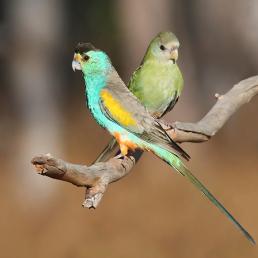

Join BirdNote tomorrow, November 30th!
Illustrator David Sibley and actor H. Jon Benjamin will face off in the bird illustration battle of the century during BirdNote's Year-end Celebration and Auction!
You'll find lessons below to use with your students, developed by other educators willing to share.
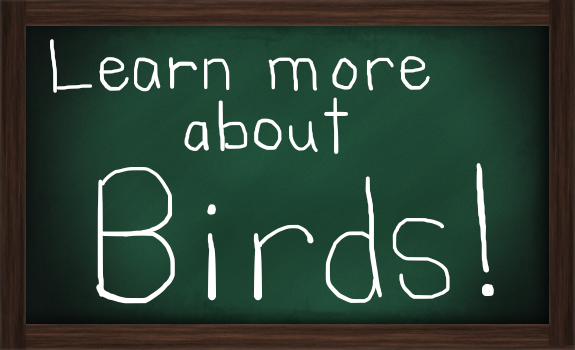
If you use any of these lessons, we'd like to hear about your experience. And if you are an educator using BirdNote in the classroom or elsewhere, we'd love to learn how.
Choose one of these links to view lessons:
K-2nd 3rd-5th 6th-8th 9-12th Lifelong Learning
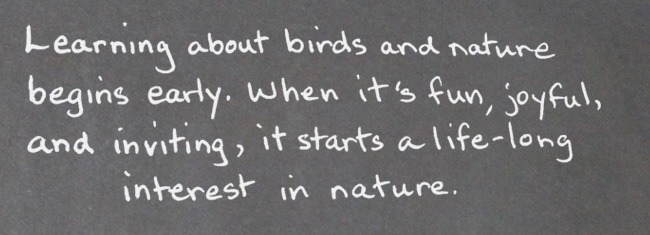
Kindergarten through 2nd Grade
Reading Aloud About Birds
Grade 1: Janice McClintock(Chambersburg, Pennsylvania)
Janice uses this lesson to introduce her first-grade class to non-fiction reading. Using photos, personal stories, and fun bird facts, she brings the birds alive. Students read aloud together from a book about birds and later add bird drawings and facts to their journals. BirdNote stories are a great resource to learn new facts and to see photos of the birds.
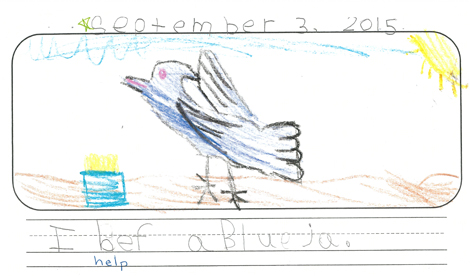
Are you a teacher who uses BirdNote with this age group? Let us know!
3rd through 5th Grade
Birds of Alaska
Grades 4-5: Jessie Soder (Gustavus, Alaska)
Jessie works with her students to build and maintain awareness for birds and nature throughout the school year. Each student researches at least 12 Alaskan bird species to be published in a book of Alaskan birds at the end of the school year. Students also undertake a year-long study where they collect data at specific sites to answer a hypothesis. All field trips are summarized on the class blog, and students keep a checklist of the bird species they see throughout the school year.
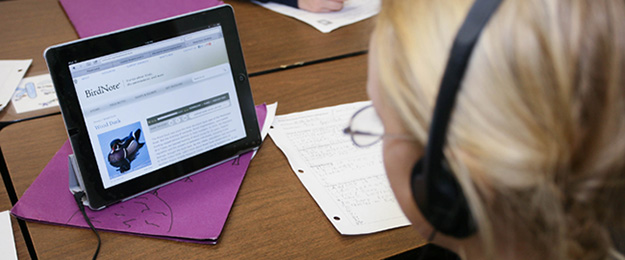
Stately State Birds
Grades 3-5: Richard Santangelo (New York, New York)
This lesson can be done in two sessions or extended. After listening to BirdNote’s podcast on state birds, students will identify their state bird and feathered representatives of other states, as well as discover which attributes helped them get elected to office. Students will research their bird’s habitat needs and design ways to make their community more bird friendly for their feathered friends. This lesson covers learning standards in life science, language arts, speaking and listening, geography, and technology.
Community Science and eBird
NatureBridge California created a new community science project using BirdNote and eBird built around Next Generation Science Standards. Create your own community science project using this lesson plan as a model. Find it here.
This lesson plan was developed with support from the BirdNote: Next Generation grant program.
Skins and Skulls
NatureBridge California used BirdNote stories, collection specimens, and on-site observation to teach 4th- and 5th-grade campers about species native to the Marin Headlands. This interactive, easily adaptable lesson plan is a great way to deepen students’ understanding of birds in their home environment. You'll find it here.
This lesson plan was developed with support from the BirdNote: Next Generation grant program.
Bird Beak Buffet
This fun, hands-on activity allows students to explore the types of foods that birds eat and understand how different beaks have evolved. The lessons fold in multiple Next Generation Science Standards along the way. The lesson plan features key BirdNote stories that further reinforce student understanding of bird evolution. You can find it here.
This lesson plan was developed with support from the BirdNote: Next Generation grant program.
Observation Birds
Using simple prompts, and multiple BirdNote stories, this lesson plan from Martin Sortun Elementary School deepens students’ understanding of the key characteristics of birds. Find it here.
This lesson plan was developed with support from the BirdNote: Next Generation grant program.
Native Washington Birds
Martin Sortun Elementary School created a lesson plan that invites students to use storytelling, research, and journaling, to gain a deeper understanding of the features of the Washington state bird, the American Goldfinch. Find it here.
This lesson plan was developed with support from the BirdNote: Next Generation grant program.
Comparing and Contrasting Birds
Martin Sortun Elementary School offers a lesson plan that invites students to research and document the difference between diurnal and nocturnal birds using BirdNote and other online resources. You can find that lesson plan here.
This lesson plan was developed with support from the BirdNote: Next Generation grant program.
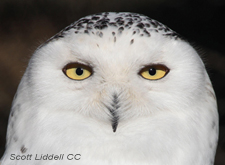 Bird Migrations and Adaptations
Bird Migrations and Adaptations
Grade 5: Rahiel Housey-Johnson(Hamtramck, Michigan)
Teacher Rahiel Housey-Johnson and her students became curious when a Snowy Owl perched outside their classroom window one winter five years ago. The children were concerned that the owl was lost and wanted to know more about Snowy Owls. Now her students listen to BirdNote every day to learn about birds and nature. The fifth-graders love the sound effects and the theme song. Rahiel says, “I think birds symbolize mystery, hope, freedom, and other concepts that urban students with a low socio-economic status embrace freely.” They remind her every day around noon to tune in and turn it up. (And thanks to WRCJ FM 90.9 for airing the show!)
Birds of Washington State
Grade 4: Emily Czerwonka (Lynnwood, Washington)
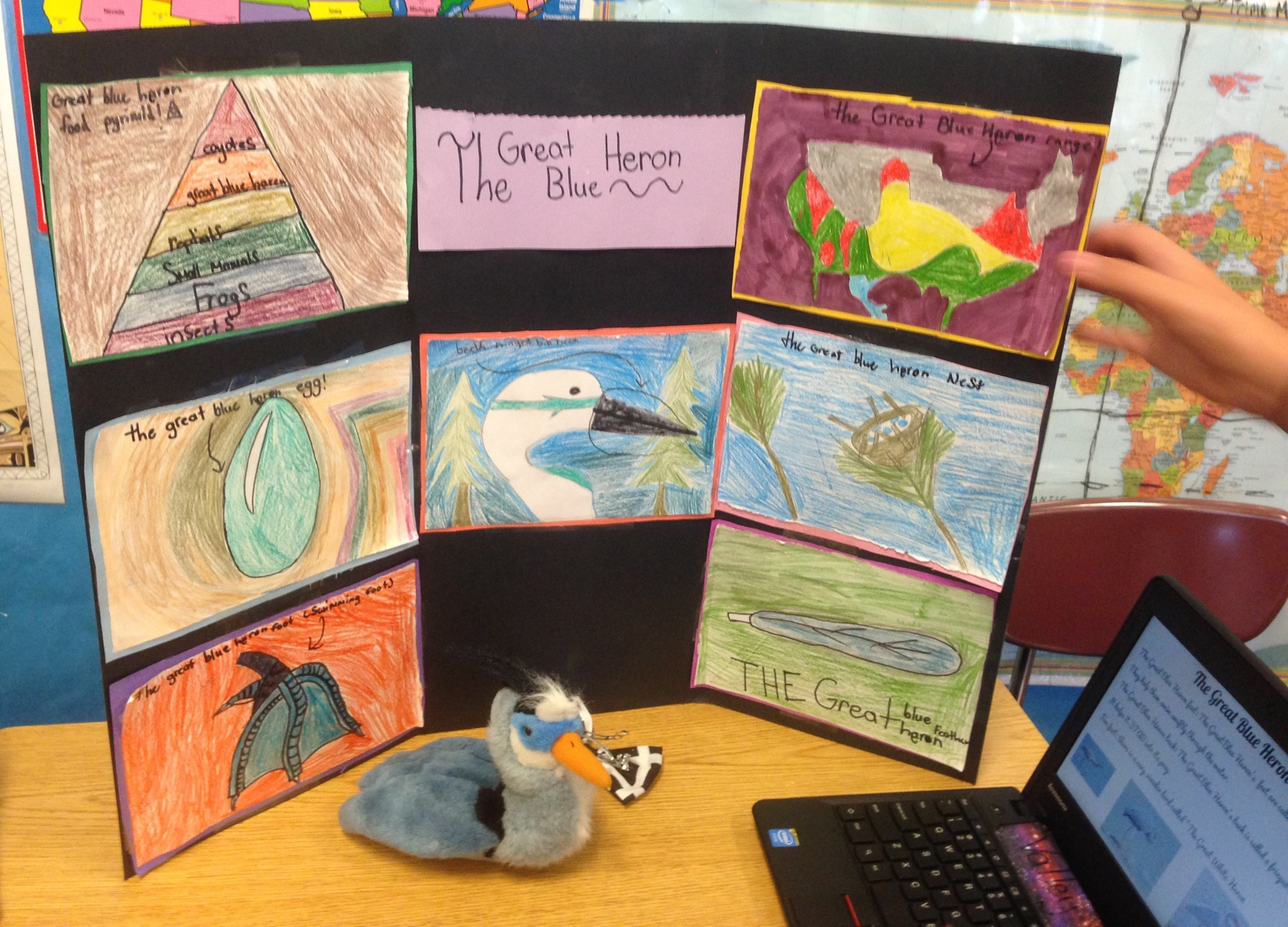 This creative and modifiable unit really excites Ms. Czerwonka's fourth-grade classes. The lessons encourage students to develop and use a wide variety of skills while learning about birds native to Washington State. Researching, reading, writing, drawing, software use, art work - all combine to cover many Next Generation Science Standard concepts and meet a variety of Common Core Standards. Individual students with differing learning styles and competence levels have an opportunity to shine while gaining new knowledge. The group project encourages sharing skills and allows for students to learn from each other. When the unit is completed, students proudly share their projects and knowledge of native birds with an open house for community visitors and presentations to other classes.
This creative and modifiable unit really excites Ms. Czerwonka's fourth-grade classes. The lessons encourage students to develop and use a wide variety of skills while learning about birds native to Washington State. Researching, reading, writing, drawing, software use, art work - all combine to cover many Next Generation Science Standard concepts and meet a variety of Common Core Standards. Individual students with differing learning styles and competence levels have an opportunity to shine while gaining new knowledge. The group project encourages sharing skills and allows for students to learn from each other. When the unit is completed, students proudly share their projects and knowledge of native birds with an open house for community visitors and presentations to other classes.
Are you a teacher who uses BirdNote with this age group? Let us know!
6th through 8th Grade
Calling All Birds
Grades 6-8: Richard Santangelo (New York, New York)
Looking for an interactive lesson to enhance your physics curriculum? After listening to BirdNote’s podcast on birdsongs and calls, students will use spectrograms as a visual tool to identify different species of birds by sound. Students will also study an animated model of a bird’s syrinx to understand how birds are able to perform their impressive acts of vocalization. This lesson can also be used with high school students.
Are you a teacher who uses BirdNote with this age group? Let us know!
Create My Birdbook
Grades 6-12: Joyanne Hamilton (Shageluk, Alaska)
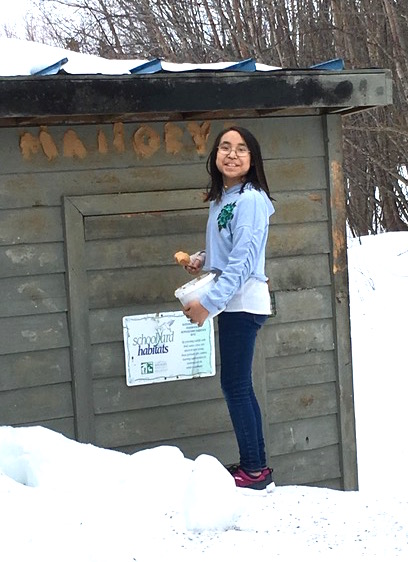
Native heritage and identifying winter birds are linked in this lesson shared by Joyanne Hamilton, a teacher in Shageluk, Alaska. In mid-winter she uses bird feeders outside the classroom window and BirdNote stories to stimulate interest in birds. For the lesson students observe winter birds, identify species, collect data, and associate bird species with indigenous names, stories, or legends. Finally, the class creates a book from their collected research and submits data to FeederWatch (project of Cornell Lab of Ornithology). Joyanne uses BirdNote as a simple resource to review basic bird science, characteristics of birds, bird history, and lore with her students. She says, “It's a great way of doing a little mini lesson on observing birds, the environment in which they live and characteristics. I use it in my science classes as a "mad minute of science."
Are you a teacher who uses BirdNote with this age group? Let us know!
9th through 12th Grade
Create My Birdbook
Grades 6-12: Joyanne Hamilton (Shageluk, Alaska)
Native heritage and identifying winter birds are linked in this lesson shared by Joyanne Hamilton, a teacher in Shageluk, Alaska. In mid-winter she uses bird feeders outside the classroom window and BirdNote stories to stimulate interest in birds. For the lesson students observe winter birds, identify species, collect data, and associate bird species with indigenous names, stories, or legends. Finally, the class creates a book from their collected research and submits data to FeederWatch (project of Cornell Lab of Ornithology). Joyanne uses BirdNote as a simple resource to review basic bird science, characteristics of birds, bird history, and lore with her students. She says, “It's a great way of doing a little mini lesson on observing birds, the environment in which they live and characteristics. I use it in my science classes as a "mad minute of science."
Are you a teacher who uses BirdNote with this age group? Let us know!
Birdwatching Through the Lens of Diversity
Grades 9-12: Richard Santangelo (New York, New York) with Drew Lanham (Clemson University)
“Conserving birds and their habitat is a moral mission that needs the broadest and most diverse audience possible to be successful.” - Dr. Drew Lanham.
Birdwatching or “birding” is one of the fastest-growing hobbies in the United States, and as of 2011, there were 47 million birders, ages 16 and older, spying our feathered friends. So why is this fast-growing hobby not reflective of the communities where we live? The BirdNote video "Rules for the Black Birdwatcher" with Dr. Drew Lanham introduces the topic of the lack of diversity in birdwatching. Students will research and discuss this question and then explore strategies to increase diversity in birdwatching and conservation in their communities. Teachers should plan to take at least two class periods for this lesson.
Who Is Behind Those Binoculars?
Grades 9-12: Richard Santangelo (New York, New York) with Drew Lanham (Clemson University)
Communities engaged in birdwatching and bird conservation are motivated to help relieve environmental pressures on birds and their habitats. Having more diverse voices in the conservation field will help to identify more local environmental problems and develop solutions to those problems. This lesson is meant to be a follow-up to the "Birdwatching Through the Lens of Diversity" lesson. It uses the BirdNote video "Behind the Binoculars" with Drew Lanham to give another view of the value of diversity in birdwatching. Then students will discuss barriers to diversity in birdwatching in their community and plan a field trip that attracts diverse participation. Teachers should plan to take at least two class periods for this lesson.
Calling All Birds
Grades 9-12: Richard Santangelo (New York, New York)
Looking for an interactive lesson to enhance your physics curriculum? After listening to BirdNote’s podcast on birdsongs and calls, students will use spectrograms as a visual tool to identify different species of birds by sound. Students will also study an animated model of a bird’s syrinx to understand how birds are able to perform their impressive acts of vocalization. This lesson can also be used with middle school students.
Are you a teacher who uses BirdNote with this age group? Let us know!
Lifelong Learning
No activities here yet. Are you a teacher who uses BirdNote with this age group? Let us know!
Share your lessons using BirdNote with others!
Are you an educator using BirdNote in the classroom or elsewhere? Tell us how.
Questions? Comments? Ideas?
Email [email protected] with EDUCATION in the subject line. Thank you.
###
Tags: lesson plan, lesson, class, classes, classroom, teach, teaching, teacher, education, educator, school
